The discovery of Tutankhamun’s tomb wouldn’t happen for another century but in 1821 in Piccadilly, London, an exhibition about ancient Egypt opened. Encouraged by Napoleon’s dramatic invasion of Egypt two decades earlier, ‘Egyptomania’ was catching on in Britain as it had in Paris.
The venue, the Egyptian Hall, was decorated with Egyptian motifs, two statues of Isis and Osiris, and hieroglyphs. On display to the public was a magnificently carved and painted one-sixth scale model of an ancient Egyptian tomb, which had been discovered four years earlier in the area of ancient Thebes (modern Luxor), later to be known as the Valley of the Kings.
At the inauguration ceremony, the tomb’s Italian discoverer, Giovanni Belzoni – a former circus strongman turned flamboyant excavator of Egypt – appeared wrapped in mummy bandages before a huge crowd. However, he was obliged to admit that he did not know who was buried in the tomb, or when, because no-one could read hieroglyphs.
Read more about heiroglyphs:
- Rosetta Stone: A history of translating ancient Egyptian hieroglyphs
- What is the Rosetta Stone?
- Who deciphered Egyptian hieroglyphs?
Ancient Egypt was as celebrated in ancient Athens and Rome as it was in 19th-Century Paris and London. In fact, it has exerted a powerful influence on the world of learning for well over two millennia, beginning with the Greek historian Herodotus, who travelled in Egypt around 450BC.
In his Histories, Herodotus identified the pyramids at Giza as places of royal burial, and provided important information about the process of mummification. Yet his works were of little or no help to 19th-Century scholars in understanding ancient Egyptian writing, for in classical antiquity, hieroglyphic writing fell into disuse. No Greek or Roman writer could read hieroglyphs, either.
The reason was that the ancient civilisation described in the hieroglyphs, founded before 3000 BC, went into eclipse in the second half of the first millennium BC, when Egypt was conquered – first by Persians, and then by Macedonian Greeks under Alexander the Great in 332 BC. For three centuries Egypt was ruled by the Greek-speaking Ptolemaic dynasty, named after Alexander’s general, Ptolemy I – one of whom created the Rosetta Stone in 196BC.
This ended with the death of Cleopatra VII and the Roman occupation in 30BC, which lasted until AD395. Thereafter, Egypt was ruled first by Coptic Christians, then by Muslims, until the time of Napoleon.
Spoken Coptic was descended from the language of ancient Egypt, but written Coptic was not hieroglyphic; it was entirely alphabetic, like Greek and Latin. Nevertheless, the Coptic language would prove invaluable in reading the hieroglyphs by providing approximate pronunciations for ancient Egyptian words.
Key terms
Cartouche
French for ‘cartridge’, the word also applies to the oval rings enclosing certain groups of hieroglyphs – generally names and titles. It was coined by French soldiers in Egypt with Napoleon, because the oval rings reminded them of the shape of their gun cartridges.
Demotic
Demotic script was derived from the far more ancient hieroglyphic script and used from about 650 BC. The standard script by the time of the Rosetta Stone, it is a cursive script with joined-up letters, suitable for handwriting, unlike the monumental hieroglyphic.
Pictogram
Pictograms are semantic signs that are pictorial in origin – think of the signs on toilet doors. However, pictograms can become unrecognisable over time, as in demotic. Many also come to represent simple sounds: in the pictograms of the hieroglyphic ‘alphabet’, for example, the ‘hand’ pictogram stands for ‘d’.
Sacred text: the words of Gods
Greek and Roman authors generally credited Egypt with the invention of writing, as a gift from the gods. They thought that hieroglyphs – the word means ‘sacred writings’ – were impenetrable symbols of ancient Egyptian wisdom, which had nothing to do with alphabets.
They dismissed any phonetic component in the hieroglyphs, and claimed that they were conceptual or symbolic signs. Thus, a hieroglyphic pictogram of a hawk was said to represent the concept of swiftness, a pictogram of a crocodile to symbolise all that was evil.
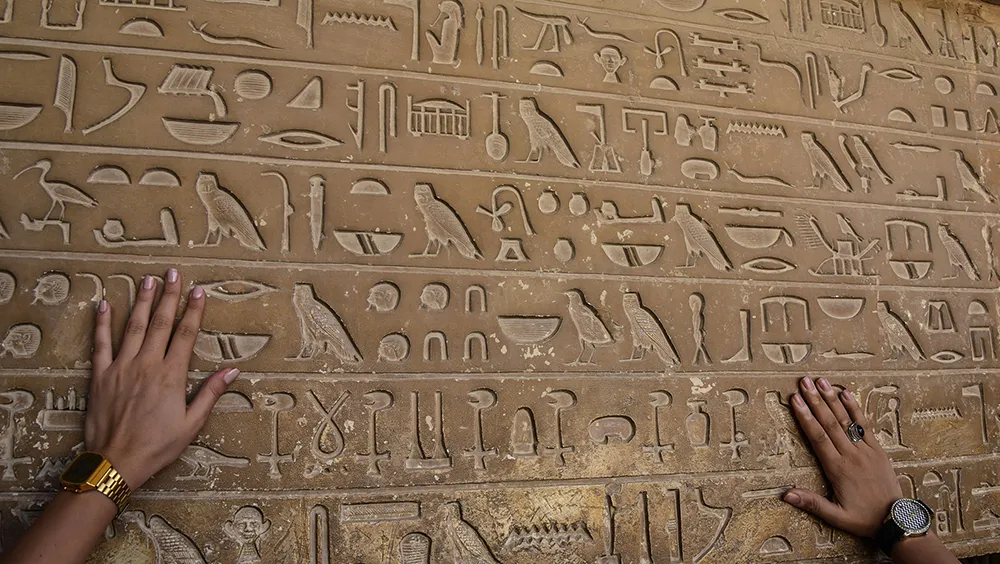
This misguided, non-phonetic view of hieroglyphs as ‘picture writing’ cast a spell over European thinking right up to the Renaissance and the rise of modern science in the 17th Century. The first ‘scientific’ step in deciphering hieroglyphs came from an English clergyman. In 1740, William Warburton, the future bishop of Gloucester, suggested that the origin of all writing might have been pictorial, rather than divine.
A French admirer of Warburton, Abbé Barthélemy, then made a sensible guess in 1762 that hieroglyphic cartouches might contain the names of kings or gods – ironically, on the basis of two false observations, one being that the hieroglyphs enclosed in cartouches differed from all other hieroglyphs.
Finally, near the end of the 18th Century, Danish scholar Georg Zoëga hazarded another useful, though unproven, conjecture: that some hieroglyphs might be, at least in some measure, what he called notae phoneticae, Latin for ‘phonetic signs’, representing sounds rather than concepts in the Egyptian language.
Discovery of the Rosetta Stone
And now we reach a turning point: the arrival of Napoleon Bonaparte’s invasion force in Egypt in 1798. Fortunately for science, this force was almost as interested in knowledge as in conquest. A large party of scholars and scientists known as ‘savants’, including the mathematician Joseph Fourier, accompanied the army.
When military engineers discovered the Rosetta Stone in July 1799 while rebuilding an old fort in the Nile Delta, the officer in charge quickly recognised the importance of its three parallel inscriptions and sent the Stone to the savants in Cairo.
That October, Napoleon himself, recently returned from Egypt, told the National Institute in Paris: “There appears no doubt that the column which bears the hieroglyphs contains the same inscription as the other two. Thus, here is a means of acquiring certain information of this, until now, unintelligible language.”
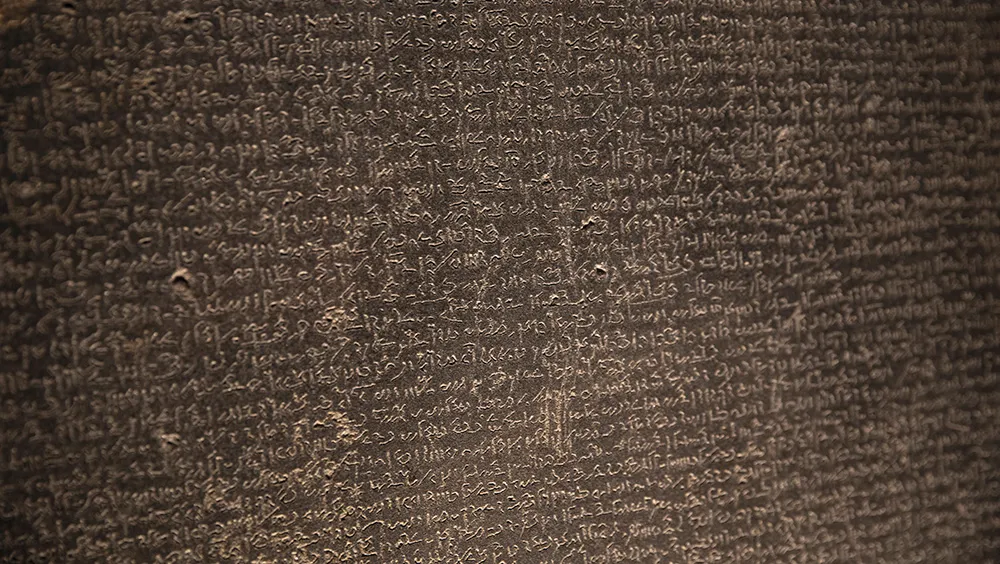
From the moment of discovery, it was clear that the bottom inscription on the Rosetta Stone was written in the Greek alphabet and the top one – unfortunately the most damaged – was in Egyptian hieroglyphs with visible cartouches. Sandwiched between them was a script about which little was known.
It plainly did not resemble the Greek script, nor did it appear to resemble the hieroglyphic script above it, not least because it lacked cartouches. Today we know this script as ‘demotic’, a cursive form of ancient Egyptian writing, as opposed to the separate signs of hieroglyphic.
The first step was to translate the Greek inscription. This turned out to be a legal decree issued at Memphis, the principal city of ancient Egypt, by a council of priests assembled on the anniversary of the coronation of Ptolemy V Epiphanes, on 27 March 196BC. The Greek names Ptolemy, Alexander and Alexandria, among others, occurred in the inscription.
Translating the Rosetta Stone
The eye of would-be decipherers was caught by the very last sentence of the Greek.
It read: "This decree shall be inscribed on a stela of hard stone in sacred and native [i.e., hieroglyphic and demotic] and Greek characters and set up in each of the first, second and third [-rank] temples beside the image of the ever-living king."
In other words, the three inscriptions – hieroglyphic, demotic and Greek – were definitely equivalent in meaning, though not necessarily ‘word for word’ translations of each other. Since the hieroglyphic section was broken, it was at first ignored in favour of the demotic section, which was almost complete.
In 1802, two scholars, a French Orientalist called Silvestre de Sacy and his Swedish student Johann Åkerblad, both adopted similar techniques.
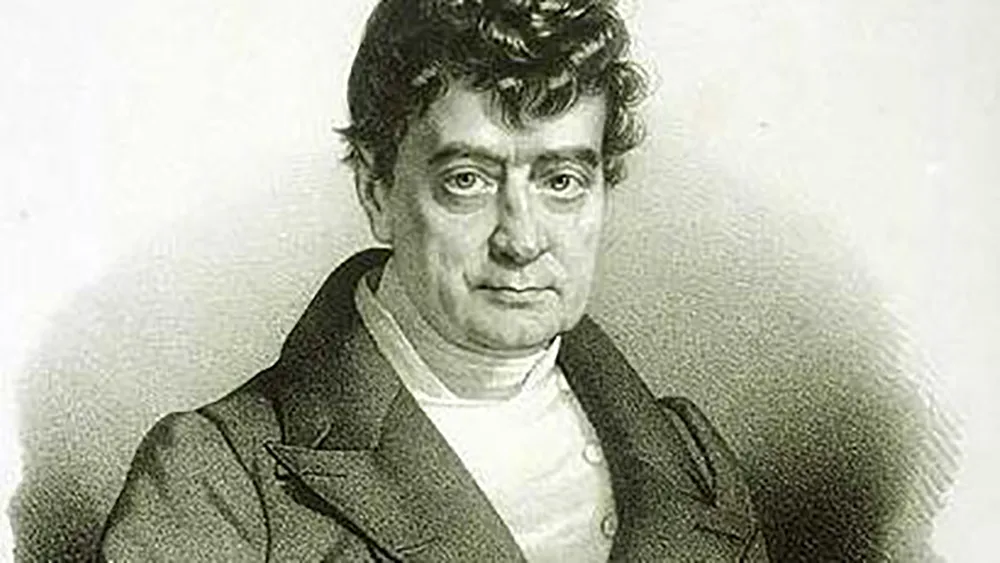
They searched for a name, in particular Ptolemy, by isolating repeated groups of demotic symbols located in roughly the same position as the 11 occurrences of Ptolemy in the Greek inscription. Having found these groups, they noticed that the names in demotic seemed to be written alphabetically, as in the Greek inscription – that is, the demotic spelling of a name apparently contained more or less the same number of signs as the number of alphabetic letters in its assumed Greek equivalent.
Matching demotic sign with Greek letter, they drew up a tentative alphabet of demotic signs. By then applying this tentative alphabet to the rest of the inscription, certain other demotic words, such as ‘Greek’, ‘Egypt’ and ‘temple’, could be identified. It looked as though the entire demotic script, not just the names, might be alphabetic like the Greek inscription.
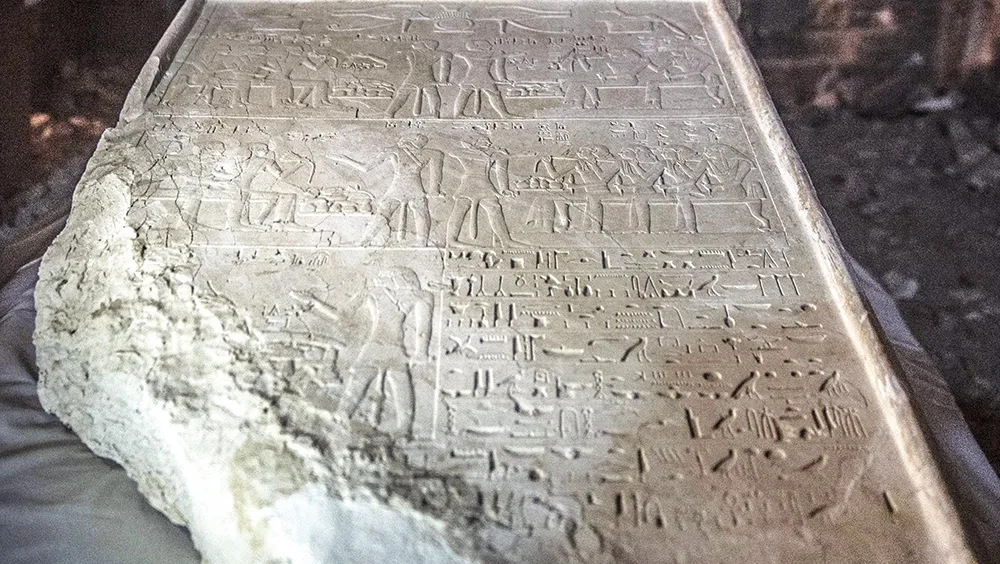
In fact demotic was not an alphabet, nor was it wholly unrelated to hieroglyphic, as de Sacy and Åkerblad thought. But de Sacy deserves credit for a useful suggestion in 1811: that the Greek names inside hieroglyphic cartouches, which he assumed must be those of rulers like Ptolemy, Alexander and so on, might be written in an alphabet, as they almost certainly were in the demotic inscription.
The same technique, he knew, was used to write foreign names in the Chinese script, which was also thought (wrongly) to have no intrinsic phonetic component.
A hieroglyphic alphabet
The next step was taken in 1815 by an English scientist, Thomas Young, a polymath with interests so diverse that he has been called “the last man who knew everything”. Following deSacy’s idea, Young tried to match the letters ‘p, t, o, l, m, e, s’ in Ptolmes, the Greek spelling of Ptolemy, with the hieroglyphs in the cartouche spelling the name of the ruler.
After applying the same technique to the name of a Ptolemaic queen, Berenice, Young had a tentative hieroglyphic ‘alphabet’, which he published in the Encyclopaedia Britannica in 1819.
Many of his sign identifications were correct, but some were erroneous. Young took one other crucial step. By painstaking comparison of the hieroglyphic and demotic inscriptions in the Rosetta Stone and other inscriptions, he showed that demotic signs were derived from hieroglyphic signs, contrary to the claims of earlier scholars.
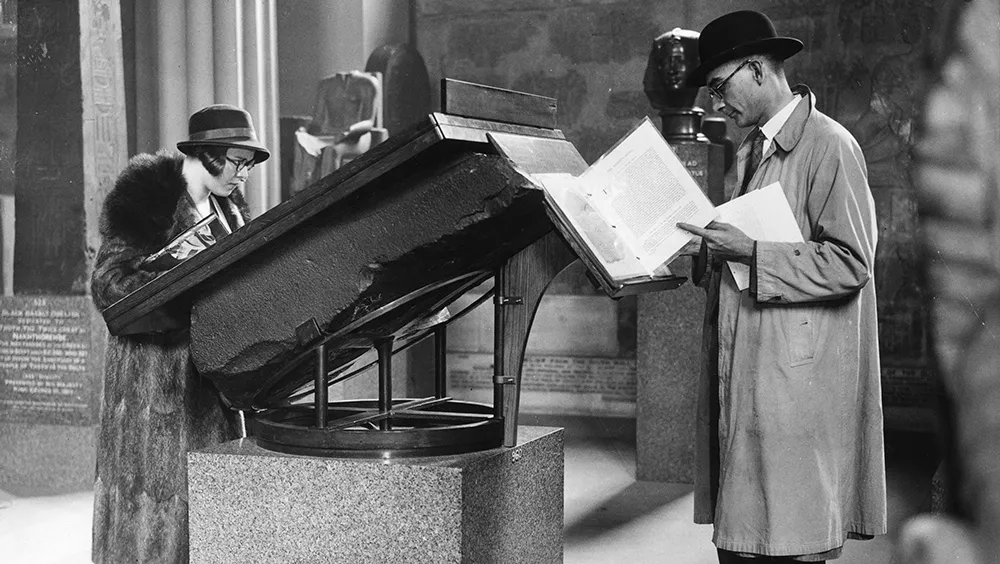
In other words, Young could trace how the pictographic hieroglyphs, showing people, animals, plants and objects of many kinds, had developed into their abstract, cursive equivalents in demotic. From this, Young correctly concluded that demotic consisted of “imitations of the hieroglyphics… mixed with letters of the alphabet”.
It was neither a purely symbolic script nor an alphabet, but a mixture of the two. However, this remarkable insight did not lead Young, still under the spell of the classical writers, to take the next logical step.
The idea that the hieroglyphic script as a whole – not just the cartouches – might be a mixed script like the demotic script, was to be the revolutionary breakthrough of Jean-François Champollion.
Champollion, as a schoolboy, had been inspired by French physicist and mathematician Joseph Fourier. Fourier became Prefect of Grenoble on his return from Egypt and showed the teenager his collection of antiquities, including inscriptions, around 1805. Champollion became absorbed in the problem of the hieroglyphs.

Later, in Paris, he was taught by de Sacy, whose frustration with the problem and Young’s subsequent progress turned Champollion’s quest into an obsession with beating his English rival.
The final pieces of the puzzle
The essential clue came in 1822, from a newly discovered cartouche containing the name of Cleopatra. Champollion now had a hieroglyphic ‘alphabet’, mostly correct, that allowed him to translate the names of dozens of rulers including Alexander and Ramesses.
Over the next year or so, Champollion analysed the daunting combination of phonetic and non-phonetic signs in the hieroglyphic script. In 1824, he wrote: “Hieroglyphic writing is a complex system, a script all at once figurative, symbolic and phonetic in one and the same text… and, I might add, in one and the same word.’
When Tutankhamun’s cartouche was discovered in 1922 and deciphered thanks to Champollion’s work, it turned out that the ‘chick’ pictogram was a phonetic sign for the vowel ‘u’, the ‘three-handled cross’ stood for the word ‘ankh’ (or ‘life’) and the ‘shepherd’s crook’ was a symbol meaning ‘ruler’.
Thanks to our understanding of hieroglyphs, the secrets of a great civilisation could now begin to be uncovered.
- This article first appeared in issue 257 of BBC Science Focus–find out how to subscribe here
